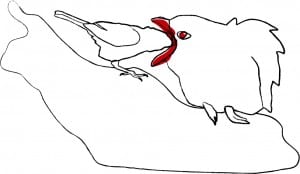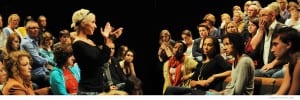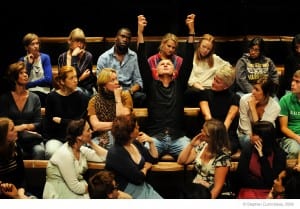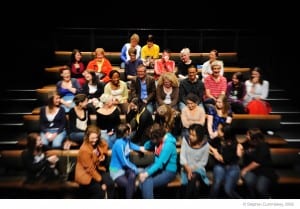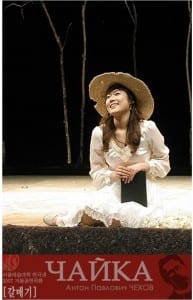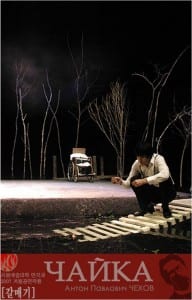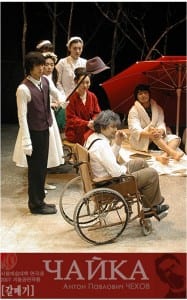Photo from timcrouchtheatre.co.uk
I am going to talk about the Author the play. The Author is written by Tim Crouch and he took part in the play as director and actor in 2009 at Royal Court. Actually, when I read this play, I felt some limit. Because, I couldn’t understand perfectly the meanings and implications of the language. However, the most obvious one is that the author is certainly different with existing plays in terms of various aspects.
Firstly, the play tears the boundary down between stage and auditorium. Of course, there were many similar forms until now but, it is more special meaning that audiences are face to face with each other. The play has stage, but has not stage. According to stage direction of the play, the stage is a kind of narrow passage, and audiences take a seat oppositely. As a result, they could most likely to feel uncomfortable, because audiences can watch with each other during the play. In other word, audiences could be an actor and actress during the play in terms of view point.
Photo from timcrouchtheatre.co.uk
Secondly, the play has distinctive relation between actors and audiences. There are totally four actors and they sporadically take a seat with audiences before the play. One man is the author who has written some play about violence of the world. And, other man and woman are actor and actress who appeared in the author’s play. Last one man is an audience who watched the author’s play. Actors constantly ask something to audience, and attempt to initiate a conversation with audiences during the play. In addition, there are quite many blanks in the scripts, it means that actors can fill in blanks through their improvisation in given situations.
Photo from timcrouchtheatre.co.uk
Thirdly, the play deviates from existing conventional dramatic structure. The play doesn’t take remarkable incident and doesn’t have specific dramatic equipment for tension and relaxation. Author’s play embraces violent subject such as terrorism, sexual assault, abuse, murder. The author and two actors just talk calmly about when they practice the author’s play what they watched relevant images and video, and sometimes, they imitate that image. And, one man who is audience talk about his impression of the play. Audiences could be squarely faced with essence of violence and cruelty through actors. The play doesn’t provide certain ending as much as uncertain incident. When the play finish, actors naturally leave from audiences, in addition there is not curtain call also.
Photo from timcrouchtheatre.co.uk
In comparison with existing plays, the author the play has definite differences in terms of stage form and dramatic structure. Author Tim Crouch has mentioned that the audiences who watch this play have to take care of themselves. Because, this play doesn’t provide any guide and certain ending. And he has added that this play is exhaustively for adult who has mature consciousness.
